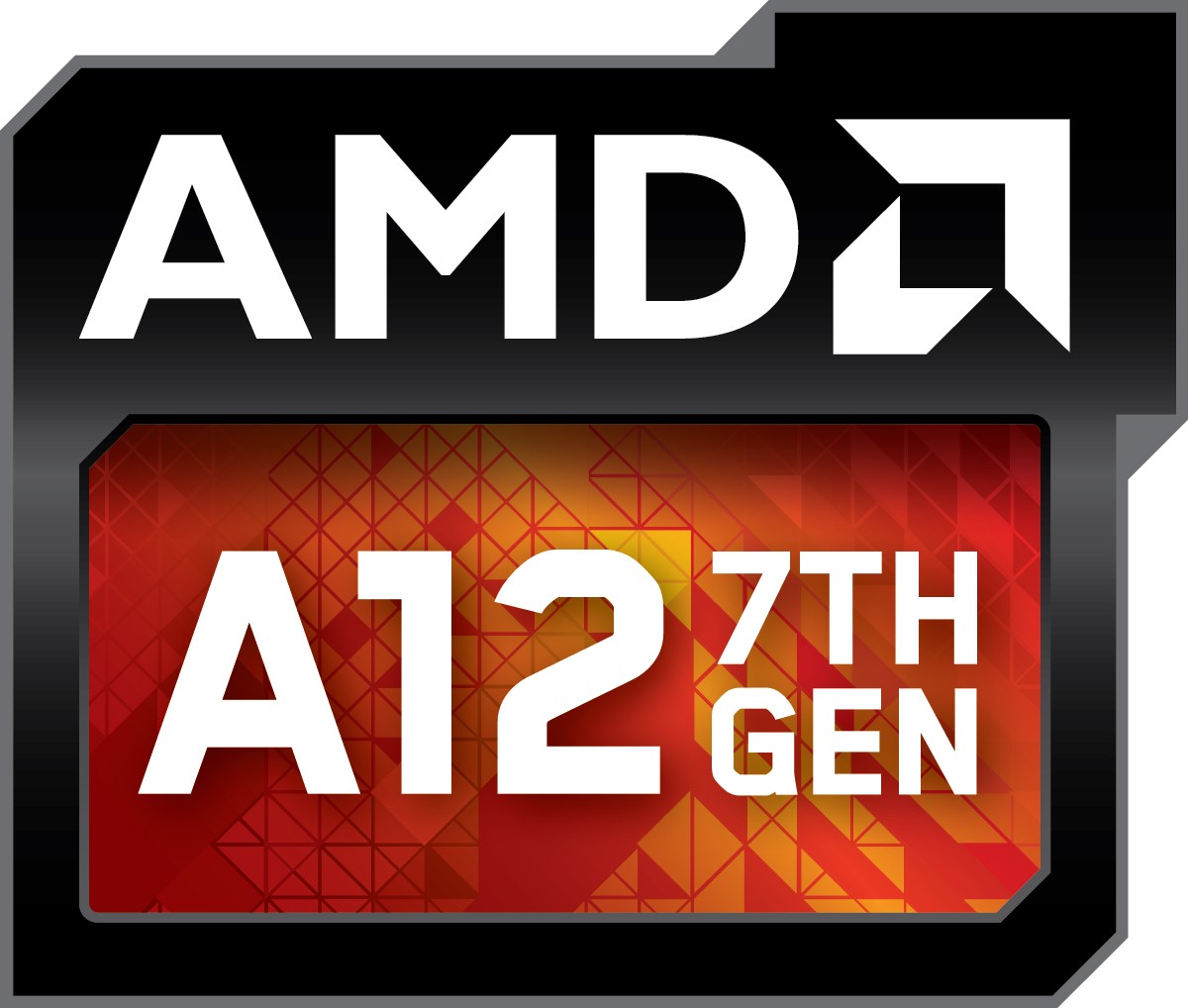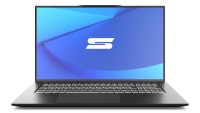(Auszug aus der Pressemitteilung)

TAIPEI, Taiwan — June 1, 2016 – AMD (NASDAQ: AMD) today announced its full 7th Generation AMD A-Series Processor lineup, designed to help provide powerful productivity and entertainment performance with maximum mobility for consumers. Previously codenamed “Bristol Ridge” and “Stoney Ridge,” the 7th Generation AMD FX™, A-Series, and E-Series Accelerated Processing Units (APUs) show major improvements in performance compared to the previous generation, including double-digit gains in gaming, video rendering, and file compression performance.[i]
Consumers can take their gaming experience to the next level using a PC equipped with support for DirectX® 12 and features like AMD FreeSync™ and AMD Dual Graphics technologies.[ii] AMD Advanced Power Management (APM) technology boosts performance to accomplish computing tasks with superior power efficiency for on-the-go capabilities. The new APUs allow users to enjoy the latest multimedia experiences in up-to Ultra HD 4K video resolution, with AMD FreeSync™ Technology support for fluid, artifact-free eSports-style gaming performance. 7th Generation AMD A-Series Processors enable a premium Microsoft® Windows® 10 experience and are primed to support the Microsoft Windows 10 Anniversary Update, expected later this year.
“At AMD, we are inspired to make every second people use their PC more immersive, productive, and energy efficient,” said Jim Anderson, senior vice president and general manager, Computing and Graphics Business, AMD. “We love the PC, and we show it in the compelling mobile experiences made possible by our 7th Generation AMD FX™ and A-Series Processors, which are the culmination of our ongoing pursuit of leadership graphics and computing capabilities in the most energy efficient processor designs.”
Notebooks powered by 7th Generation AMD A-Series Processors allow users to work faster and play longer[iii], as up to four cores deliver powerful performance and superior energy efficiency for all day battery life[iv]. Shipping in volume to OEM customers, the full line of 7th Gen AMD A-Series processors feature mobile-optimized “Excavator” x86 CPU cores for high-speed computing, plus built-in Radeon™ graphics – with some models offering up to Radeon™ R7 graphics – for smooth eSports gaming and enhanced HD streaming capabilities. The “Bristol Ridge” lineup consists of 35- and 15-watt versions of AMD FX, A12, and A10 processors, while “Stoney Ridge” processors include 15-watt A9, A6 and E2 configurations.
7th Generation AMD A-Series Processors deliver smooth multitasking, fast start-up times, and premium video streaming and playback features, all with superb power efficiency. AMD delivers graphics and compute superiority versus the competition, with up to 53% higher graphics performance[v] and up to 51% higher compute performance when the 7th Generation AMD FX processor is compared to the Intel Core i7[vi]. Improved energy efficiency allows the 7th Generation AMD FX™ 9800P processor to consume up to 12% less power in productivity workloads compared to the previous generation AMD FX-8800P APU.[vii]
AMD identified an industry-wide performance need in the entry level – or “everyday” – PC segment which it addressed with the 7th Generation A-Series Processors codenamed “Stoney Ridge.” With the new 7th Generation AMD A9, A6, and E2 processors, AMD brings high-performance “Excavator” cores and premium video playback processing to this segment, which represents 26% of all PCs sold annually[viii]. This enables consumers to get more done, manage more complex tasks, and enjoy more immersive video streaming and playback. Improved GCN cores enable optimal graphics performance and breathtaking image quality. The transition to “Excavator” cores delivers up to 50% faster CPU core performance over the previous generation[ix]. The new AMD A9 APU also performs well against the competition, providing up to 27% faster graphics performance than the Intel Pentium-4405U[x] and even rivaling the Intel i3-6100U with competitive graphics[xi] and system performance[xii], but with up to 1.2 GHz faster CPU speed[xiii].
Strong OEM partnerships and support of the 7th Generation AMD APUs play a vital role in delivering the best user experience. As announced on April 5, 2016, AMD accelerated the availability of the new processors to support exciting new notebook designs, which allowed Acer, Asus, Dell, HP, and Lenovo to bring to market richly configured, high-performance systems powered by the 7th Generation AMD A-Series Processors, many of which can be seen at Computex 2016, with additional designs and partners expected to be announced throughout 2016.
[i] Testing by AMD Performance labs. PC manufacturers may vary configurations yielding different results. Dota 2 1366×768 @Maximum Detail average FPS; the 7th Generation AMD FX™ 9800P scored 31.03 FPS, while the 6th Generation AMD FX-8800P scored 22.7 for a benchmark score comparison of 31.03/22.7 = 1.37X or 37% more. ony Vegas Pro average time to render to .avi; the 7th Generation AMD FX™ 9800P took 86.03 seconds, while the 6th Generation AMD FX-8800P took 107.99 seconds for a comparison of 107.99/86.03 = 1.26X or 26% faster. Testing by AMD Performance labs. PC manufacturers may vary configurations yielding different results. WinZip 18.5 average time to compress; the 7th Generation AMD FX™ 9800P took 47.03 seconds, while the 6th Generation AMD FX-8800P took 63.94 seconds for a comparison of 63.94/47.03 = 1.36X or 36% faster. BRN-40, BRN-41, BRN-42. System Configuration: 7th Gen AMD FX™ 9800P: AMD ‘Gardenia’ reference platform, 7th Gen AMD FX™ 9800P with AMD Radeon™ R7 Graphics, 2×4096 DDR3-1866 RAM, 244GB SSD Drive (Non-rotating), Microsoft Windows 10 Pro, Graphics driver 16.101.0.0 2016-01-31. AMD FX-8800P: HP ENVY m6 Notebook, FX-8800P with AMD Radeon™ R7 Graphics, 2×4096 DDR3-1600 RAM, 244GB SSD Drive (Non-rotating), Microsoft Windows 10 Pro, Graphics driver 15.300.1025.1001 2015-12-03
[ii] FreeSync is an AMD technology designed to eliminate stuttering and/or tearing in games and videos by locking a display’s refresh rate to the framerate of the graphics card. Monitor, AMD Radeon™ Graphics and/or AMD A-Series APU compliant with DisplayPort™ Adaptive-Sync required. AMD Catalyst™ 15.2 Beta (or newer) required. Adaptive refresh rates vary by display; check with your monitor manufacturer for specific capabilities.
[iii] Testing by AMD Performance labs. PC manufacturers may vary configurations yielding different results. PCMark® 8 v2 Home is used to simulate system performance; the AMD FX™ 9830P scored 3477.4, while the AMD A10-5750M scored 2520.75 for a benchmark score comparison of 3477.4/2520.75 = 1.38X or 38% (Work Faster). Local 1080p video playback using the FX-9800P utilized 4.263W average while the A10-5750M utilized 12.925W average (Play Longer). Work Faster Configs: AMD FX™ 9830P: AMD Bristol, AMD FX™ 9830P with AMD Radeon R7 Graphics, 2×4096 DDR4-2400 RAM, 244GB SSD Drive (Non-rotating), Microsoft Windows 10 Enterprise, Graphics driver 15.300.0.0 2015-11-09; A10-5750M: Hewlett-Packard HP ENVY TS 15 Notebook PC, A10-5750M with AMD Radeon HD 8650G, 2×4096 DDR3-1600 RAM, 244GB SSD Drive (Non-rotating), Microsoft Windows 10 Pro, Graphics driver 15.200.1055.0 2015-07-05
Play Longer Configs: 7th Gen AMD FX™ 9800P: AMD “Gardenia” platform, 2×4096 DDR4-1866 RAM, 256GB SSD Drive (Non-rotating), Microsoft Windows 10 Pro, Graphics driver 16.100.0.0 2016-1-12. AMD A10-5750M: AMD “Pumori” platform, 2×2048 DDR3L-1600, 250 GB 5400RPM HDD, Windows 8 Pro 64-bit, Graphics Driver 9.10.0.0 2012-10-23. BRN-20
[iv] AMD defines All-Day Battery Life as 8+ hours of continuous use when measured with the Windows Idle test.
[v] Testing by AMD Performance labs. PC manufacturers may vary configurations yielding different results. 3DMark 11 Performance is used to simulate gaming performance; the 7th Generation AMD FX @ 15W scored 2424.5 while the Intel® Core i7-6500U scored 1585.75, for a benchmark score difference of 2424.25/1585.75 = 1.53X or 53%. 7th Gen AMD FX™ 9800P: AMD “Gardenia” platform, FX 9800P with AMD Radeon R7 Graphics, 2×4096 DDR4-1866 RAM, 244GB SSD Drive (Non-rotating), Microsoft Windows 10 Pro, Graphics driver 16.101.0.0 2016-01-31; i7-6500U: ASUS X555UA, i7-6500U with Intel(R) HD Graphics 520, 2×4096 DDR3-1600 RAM, 244GB SSD Drive (Non-rotating), Microsoft Windows 10 Pro, Graphics driver 20.19.15.4352 2015-12-14. BRN-57
[vi] Testing by AMD Performance labs. PC manufacturers may vary configurations yielding different results. Basemark CL is used to simulate system performance; the AMD FX™ 9800P scored 80.7, while the Intel i7-6500U scored 53.57 for a benchmark score comparison of 80.7/53.57 = 1.51X or 51% more. 7th Gen AMD FX™ 9800P: AMD “Gardenia” platform, FX 9800P with AMD Radeon R7 Graphics, 2×4096 DDR4-1866 RAM, 244GB SSD Drive (Non-rotating), Microsoft Windows 10 Pro, Graphics driver 16.101.0.0 2016-01-31; i7-6500U: ASUS X555UA, i7-6500U with Intel(R) HD Graphics 520, 2×4096 DDR3-1600 RAM, 244GB SSD Drive (Non-rotating), Microsoft Windows 10 Pro, Graphics driver 20.19.15.4352 2015-12-14. BRN-70
[vii] Testing by AMD Engineering labs. MobileMark® 14 Office Productivity Tests. The MobileMark 2014 Office Productivity test results reflect a 63-minute average power consumption when the system is running the first iteration of a MobileMark 2014 workload. PC manufacturers may vary configurations yielding different results. The 7th Generation AMD FX™ 9800P APU consumed 1.783 watts while the 6th Gen AMD FX-8800P APU @15W consumed 2.017 watts for a difference of 1.783/2.017 = .88X or 12% less. 7th Gen AMD FX 9800P, „Gardenia“ reference platform, AMD FX 9800P with Radeon R7 Graphics, 2×4096 DDR4-1866 RAM, 256GB SSD Drive (Non-rotating), Microsoft Windows 10 Pro, Graphics Driver 16.100.0.0 01/12/2016. 6th Gen AMD FX 8800P, „Gardenia“ reference platform, AMD FX-8800P with Radeon R7 Graphics @15W, 2×2048 DDR3L-1866 RAM, 256GB SSD Drive (Non-rotating), Microsoft Windows 10 Pro, Graphics Driver 15.201.0.0 (08/03/2015). BRN-81
[viii] IDC Q2 2015 – Q1 2016 PC Market Analysis.
[ix] Testing by AMD Engineering and Performance labs. PC manufacturers may vary configurations yielding different results. Cinebench R11.5 1T is used to simulate CPU core performance; the 7th Generation AMD A9 scored .96 while the previous generation A8 scored .63 for a benchmark score difference of .96/.63 = 1.52x or 52%. 7th Generation A9: AMD Reference platform, Windows 10, 256 GB Crucial SSD – T256M550SSD1, 1x4GB DDR4-2133, Graphic Driver 16.10_BR296655 1/4/2016); AMD A8-7410: AMD Gardenia, AMD A8-7410 with AMD Radeon(TM) R5 Graphics, 1×4096 DDR3-1866 RAM, 244GB SSD Drive (Non-rotating), Microsoft Windows 8.1 Pro, Graphics driver 14.502.1002.1003 2015-01-31. SRN-15
[x] Testing by AMD Performance labs. PC manufacturers may vary configurations yielding different results. 3DMark® 11 Performance is used to simulate system performance; the AMD A9-9410 scored 1202.25, while the Intel Pentium 4405U scored 947.75 for a benchmark score comparison of 1202.25/947.75 = 1.27X or 27% faster. 7th Gen AMD A9-9410: AMD “Gardenia” platform, A9-9410 with AMD Radeon™ R5 Graphics, 1×4096 DDR4-2133 RAM, 244GB SSD Drive (Non-rotating), Microsoft Windows 10 Pro, Graphics driver 16.100.0.0 2016-01-24; 4405U: HP ProBook 450 G3, 4405U with Intel(R) HD Graphics 510, 2×4096 DDR3-1600 RAM, 244GB SSD Drive (Non-rotating), Microsoft Windows 10 Pro, Graphics driver 20.19.15.4390 2016-02-17. SRN-51
[xi] Testing by AMD Performance labs. PC manufacturers may vary configurations yielding different results. 3DMark® 11 Performance is used to simulate system performance; the AMD A9-9410 scored 1202.25, while the Intel i3-6100U in single channel RAM configuration scored 1230.75 for a benchmark score comparison of 1202.25/1230.75 = .98X or 98%. 7th Gen AMD A9-9410: AMD “Gardenia” platform, A9-9410 with AMD Radeon™ R5 Graphics, 1×4096 DDR4-2133 RAM, 244GB SSD Drive (Non-rotating), Microsoft Windows 10 Pro, Graphics driver 16.100.0.0 2016-01-24; i3-6100U: HP Pavilion x360 Convertible, i3-6100U with Intel(R) HD Graphics 520, 1×4096 -1600 RAM, 244GB SSD Drive (Non-rotating), Microsoft Windows 10 Enterprise, Graphics driver 20.19.15.4300 2015-09-30. SRN-50
[xii] Testing by AMD Performance labs. PC manufacturers may vary configurations yielding different results. PCMark® 8 v2 Home is used to simulate system performance; the AMD A9-9410 scored 2668.25, while the Intel i3-6100U in single channel RAM configuration scored 2807 for a benchmark score comparison of 2668.25/2807 = .95X or 95%. 7th Gen AMD A9-9410: AMD “Gardenia” platform, A9-9410 with AMD Radeon™ R5 Graphics, 1×4096 DDR4-2133 RAM, 244GB SSD Drive (Non-rotating), Microsoft Windows 10 Pro, Graphics driver 16.100.0.0 2016-01-24; i3-6100U: HP Pavilion x360 Convertible, i3-6100U with Intel(R) HD Graphics 520, 1×4096 -1600 RAM, 244GB SSD Drive (Non-rotating), Microsoft Windows 10 Enterprise, Graphics driver 20.19.15.4300 2015-09-30. SRN-55
[xiii] The 7th Generation AMD A9-9410 has a base CPU of 2.9 and a max CPU frequency of 3.5 GHz, while the Intel Core i3-6100U only has a base frequency of 2.3 GHzhttp://ark.intel.com/products/88180/Intel-Core-i3-6100U-Processor-3M-Cache-2_30-GHz?q=i3-6100u






Neueste Kommentare
24. April 2025
24. April 2025
18. April 2025
15. April 2025
14. April 2025
14. April 2025